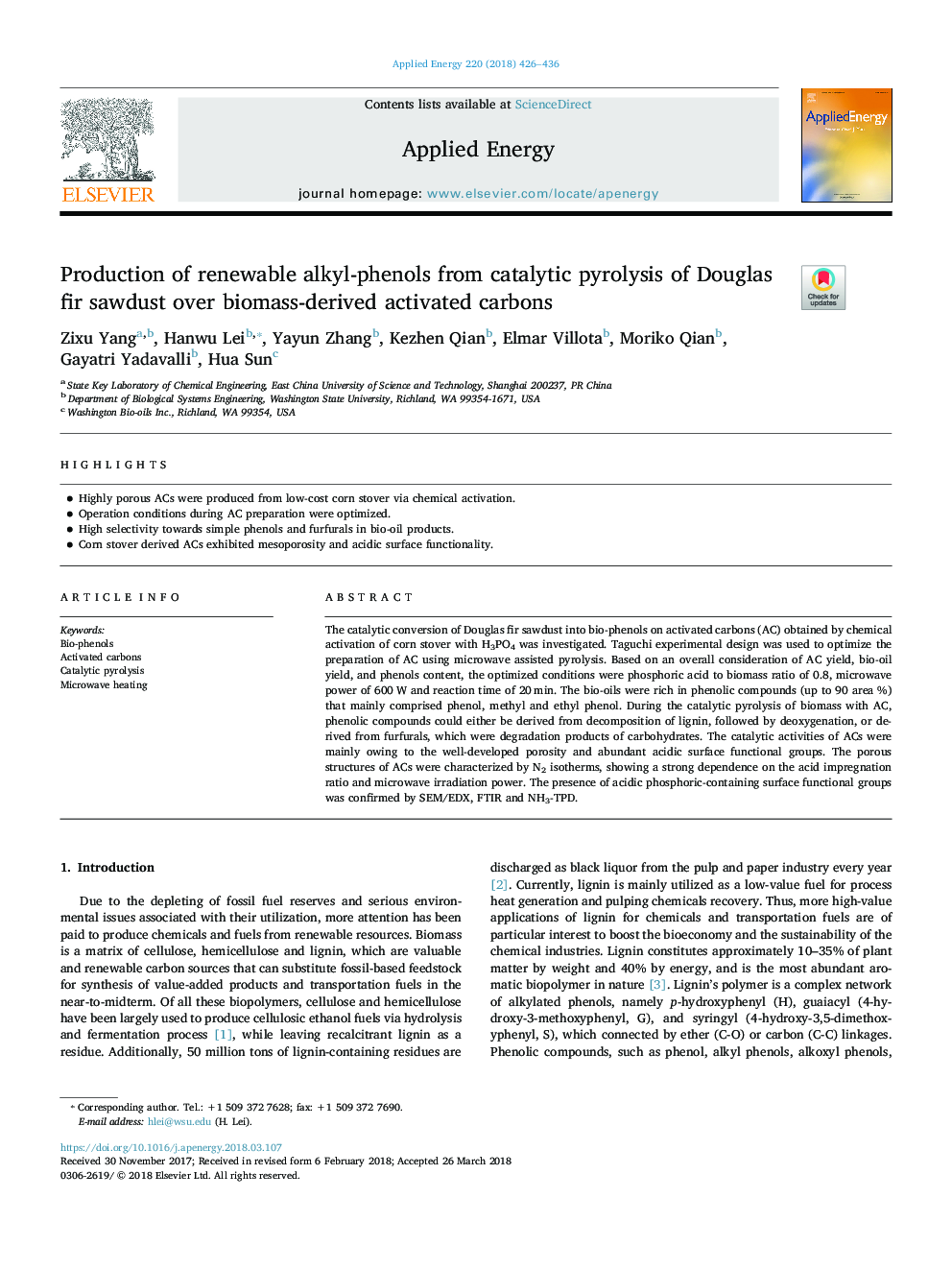| Article ID | Journal | Published Year | Pages | File Type |
|---|---|---|---|---|
| 6680273 | Applied Energy | 2018 | 11 Pages |
Abstract
The catalytic conversion of Douglas fir sawdust into bio-phenols on activated carbons (AC) obtained by chemical activation of corn stover with H3PO4 was investigated. Taguchi experimental design was used to optimize the preparation of AC using microwave assisted pyrolysis. Based on an overall consideration of AC yield, bio-oil yield, and phenols content, the optimized conditions were phosphoric acid to biomass ratio of 0.8, microwave power of 600â¯W and reaction time of 20â¯min. The bio-oils were rich in phenolic compounds (up to 90 area %) that mainly comprised phenol, methyl and ethyl phenol. During the catalytic pyrolysis of biomass with AC, phenolic compounds could either be derived from decomposition of lignin, followed by deoxygenation, or derived from furfurals, which were degradation products of carbohydrates. The catalytic activities of ACs were mainly owing to the well-developed porosity and abundant acidic surface functional groups. The porous structures of ACs were characterized by N2 isotherms, showing a strong dependence on the acid impregnation ratio and microwave irradiation power. The presence of acidic phosphoric-containing surface functional groups was confirmed by SEM/EDX, FTIR and NH3-TPD.
Related Topics
Physical Sciences and Engineering
Energy
Energy Engineering and Power Technology
Authors
Zixu Yang, Hanwu Lei, Yayun Zhang, Kezhen Qian, Elmar Villota, Moriko Qian, Gayatri Yadavalli, Hua Sun,
